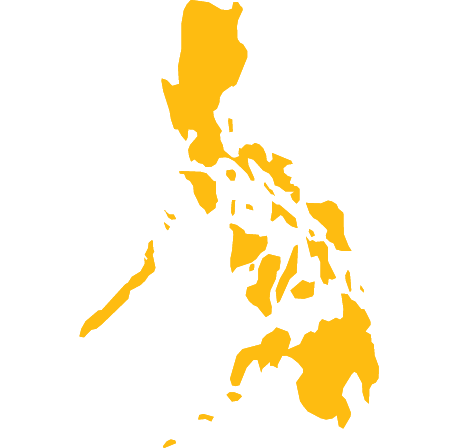Edgar’s experiences
“On the night of 16 December 2021, after completing our daily routine, the entire province suffered a power outage as the wind and rain picked up and uprooted trees.
EDGAR, BRANCH MANAGER
As the water rapidly rose, we secured all our equipment in a safe place and fled to a higher space, the branch neighbours’ second floor. Returning to the branch was not an option as the water was neck-deep.
We had been informed about the typhoon in the news and our Management had already urged us to take precautionary measures. We prepared by ensuring the safety of our team by advising them to return early from the field, charging flashlights, moving electrical equipment to higher ground, and buying non-perishable food.
As the water subsided, we started to clean and retrieve our things. There was no electricity or internet, and there were long lines in front of banks, gas stations, water refilling stations, and grocery stores. Although we had money to buy food, most stores were closed.
After securing the safety of the branch, we gathered information regarding the situation of other team members and our clients. We received relief goods which we packaged and distributed to our clients. I am relieved for the support and that staff and clients were not left empty-handed.”
LOCATION
The Philippines
BRANCH
Kabankalan, Visayas
JOB TITLE
Branch Manager

As an island located in ‘the ring of fire’, a path along the Pacific Ocean characterised by active volcanoes and frequent earthquakes, natural disasters are unfortunately no exception in the Philippines. The team must always be prepared.
Resilience in the face of adversity
Pagasa Philippines’ disaster management
On a yearly basis, the Philippines experiences approximately 20 typhoons, five earthquakes and volcanic eruptions remain unpredictable. To deal with these frequently occurring calamities, Pagasa Philippines has implemented an extensive disaster management plan demonstrating
that effective communication is key.
Preparing for natural disasters
The Disaster and Risk Management Committee ensures that the Company is prepared for the eventuality of a disaster by reviewing the exposure to risk from time to time and guaranteeing various policies and practices are in place that indicate measures to be taken before, during and after a calamity. Practices consist of assigning sub-committees who take on different responsibilities when a disaster occurs, training and deploying emergency-specific and general guidelines. Training includes drills, such as earthquake and fire drills, initiated by the government’s Disaster Risk Reduction and Management programme.
In the event of a disaster, clear guidelines are disseminated to the branches and shared with field staff. Emergency hotline numbers are posted at the branches and clients are prepared through group meetings and an SMS text sent to group leaders. Staff and clients are reminded or made aware of what to do during a calamity and familiarised with the closest government evacuation facility.
During the disaster, the situation is monitored around the clock; updates are given by field staff and guidance and support is provided from the head office in Quezon City if required.
Responding and coping with the aftermath of calamities
In the aftermath of a disaster, the impact is determined through collecting data. Affected clients and staff members and damage to branches are assessed and reported. Through the various committees set up beforehand, disaster relief is mobilised. Supplies are brought to the branches and necessities such as non-perishable foods are distributed to clients and communities through community programmes.
Staff who lost belongings can apply for financial assistance and affected clients are provided with a moratorium. Furthermore, assessments are executed on the status of clients’ businesses and additional support is recommended. For instance, if all stock is damaged, a rehabilitation loan can be offered on top of an existing loan, or clients can withdraw from their Loan Capital Build-Up savings, designed for uncertain times.
Depending on the absolute damage and the response by governments and other parties, recovery of operations takes approximately one to two weeks.
Destructive typhoon Rai
Typhoons are a regular occurrence during the monsoon season, but can differ significantly in severity. Typhoon Rai (locally known as ‘Odette’), which occurred in December 2021, was considered a category five storm or ‘super typhoon’. It made five landfalls and had maximum sustained winds of 195 km/hr and gustiness of 270 km/hr. The absolute damage: 9 million people displaced, 36 million homes damaged or destroyed, and 514 municipalities affected. 83 branches of Pagasa Philippines across Mindanao and Visayas archipelago were affected.
"Because we were informed and guided on what to do, we were all safe. There were no casualties and the Company assets were secured. I have never experienced such extreme flooding in this area, so I have learned to not be complacent, as the climate is unpredictable.
Edgar Se-It, Branch manager


